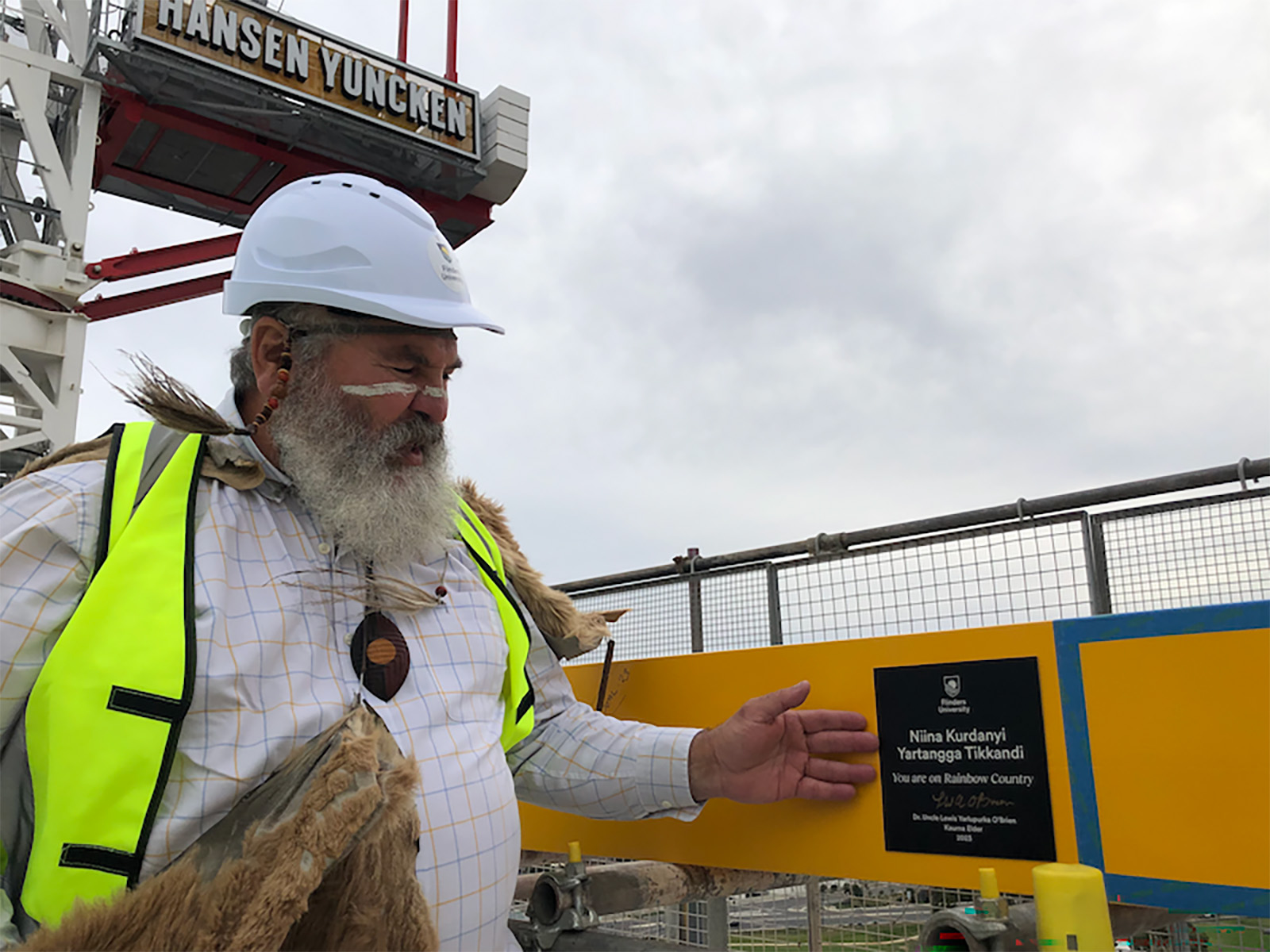
By Hannah Wooller
A commitment to seek shared wisdom and guidance will ensure a connectivity to Country for the centrepiece of the University’s Flinders Village development.
As a mark of respect for its location on Kaurna Country, Flinders University has chosen to centre Kaurna ways of ʻbeing and doingʼ in the next stage of campus growth taking shape at Bedford Park – the Health and Medical Research Building (HMRB) at the heart of the future Flinders Village development.
Based on our deep understanding of the importance of collaboration and real-world impacts, we are building a place where research, education and clinical expertise can come together to create the next generation of health care.
More than 600 researchers and support staff across multiple health and wellbeing disciplines will be based in HMRB. It will be home to key research institutes, including the Flinders Health and Medical Research Institute and the Caring Futures Institute.
Thanks to shared wisdom and guidance from the Cultural Narrative and Indigenous Art Advisory Panel, which includes Uncle Lewis Yarlupurka O’Brien (DUniversity ’11), HMRB’s design does more than acknowledge Kaurna heritage – it is integrated into the local landscape, aligned with significant Kaurna sites, and seeks to work with Country rather than be imposed on it.
Uncle Lewis says Kaurna Yarta (Kaurna Country) had the most vibrant rainbow-coloured dunes, more than 20 feet high along the coastline, and was a place of shelter and community for Kaurna people.
He explains the rainbow sand represents the past and makes sense of the place on Country. Sand, water, wind and rainbows are all shifting and moving and always becoming. The building will be a reflection of the rainbow sands and the rainbow in the skies, with the significance of double rainbows representing the Kaurna way of knowing duality.
Taking inspiration from Rainbow Yarta, each level of HMRB corresponds with the rainbow sands and acknowledges what was once there, what is, and what will come.
HMRB’s aluminium façade panels are aligned to draw the eye to significant Kaurna sites and features a design by Indigenous artist James Tylor. Based on body painting from the traditional Kuri ceremony, the pattern represents the coming together of people to exchange knowledge and information; the point where songlines intersect and new ideas are shared, speaking to the intention at the heart of HMRB.
These themes extend to both interior artwork and to landscaping, where a traditional Indigenous medicine garden will serve as a reminder of the value of Indigenous knowledges and connection to Country.
Due for completion in early 2024, HMRB will be a place that truly represents Flinders’ goal to change lives and change the world.
Find out more: flinders.edu.au/hmrb

